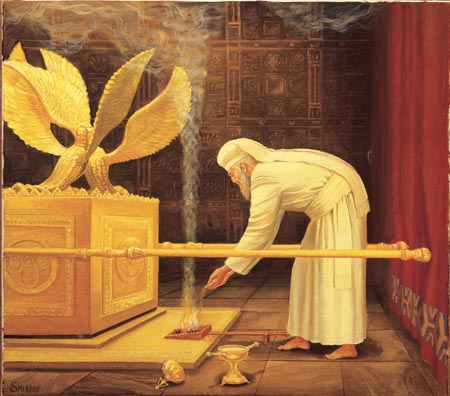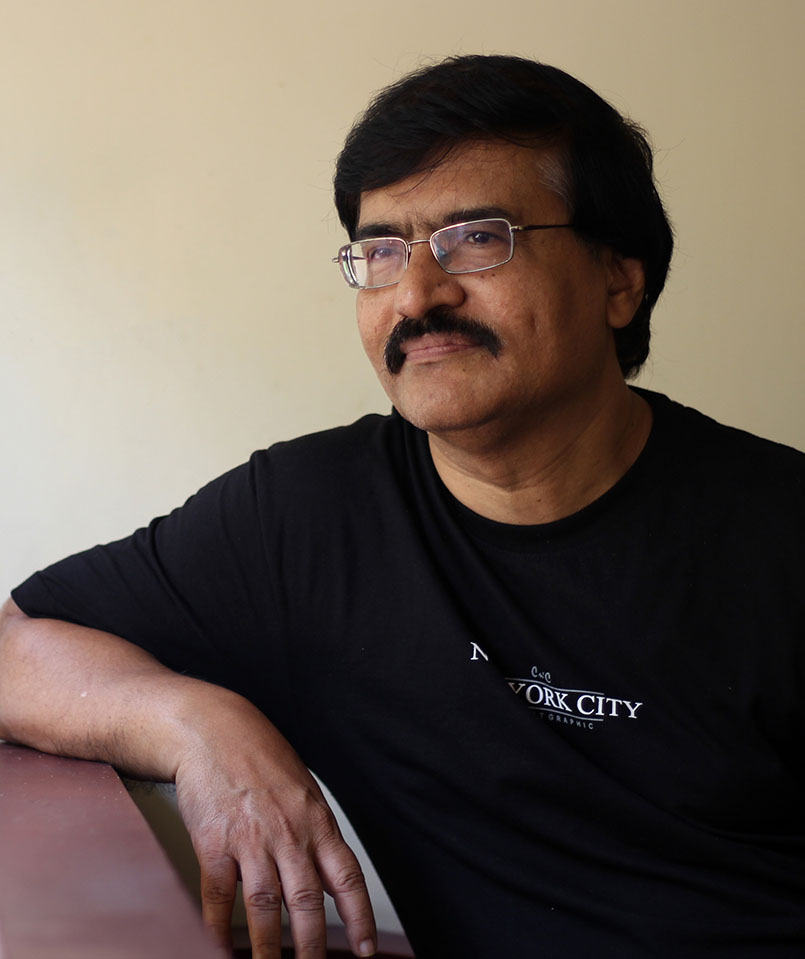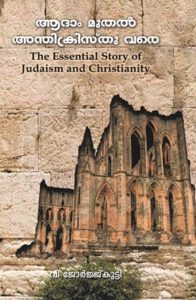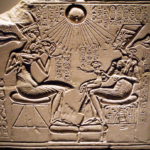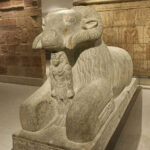“Men will never be free until the last king is strangled with the entrails of the last priest.”
(Denis Diderot, French philosopher, art critic, and writer)
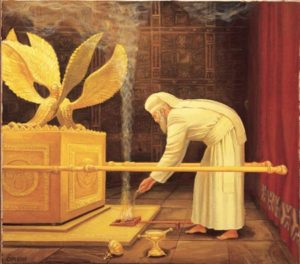
When Apostle Paul started establishing the first churches, many people saw it as an opportunity to exploit it for personal aggrandizement. As the church evolved into a politically and financially powerful establishment, this tendency to capture ecclesiastic power too increased. Paul, Peter and Jude all speak out against the activities of men in the early church, who were attempting to take over the control of the churches. It is true that there are well-meaning and honest leaders in the various factions of today’s church. But, historically, there has been a tendency for the church leadership to claim unquestionable authority over the congregation. This is witnessed even today in one form or the other even today. This does not seem to be based on any scriptural authority. It is doubtful whether the New Testament really envisages a professional clergy with authority to rule over the congregation.
According to the New Testament, the people who acted as leaders in the local churches were ‘presbuteros’, a Greek term translated as ‘elders’. It meant ambassador or guide. We have no information on what process was used to select the elders or what duties and responsibilities were assigned to them. But, what is clear is that the elders were not called upon to build their own little empires or wield any unquestionable authority over the faithful. They were only assigned the task of serving their fellow believers in the capacity of spiritual guides or mentors.
Paul instructs the elders, “Keep watch over yourselves and all the flock of which the Holy Spirit has made you overseers. Be shepherds of the church of God, which he bought with his own blood”, (Acts 20:28). We might roughly rewrite this verse to obtain the spirit of the advice of Paul as, “So, continue to watch over your own lives, as well as the lives of the others in the church; remember, the Holy Spirit has chosen you to watch over them, and in so doing, guide the Lord’s church, which He bought with His own blood.”
In about 64 CE, Paul was apparently released from house arrest in Rome. He then writes his first epistle to Timothy, who is assisting the church at Ephesus at the time. Therein, he uses the Greek term episkope, (1 Timothy 3:1). In the King James Version (KJV), this word is translated as “office of a bishop”. However, this word is used to denote “someone who has been appointed to watch over” (an elder). So, in many later translations, the word is translated as ‘overseer’.
But, there is a verse the church leadership often cites as proof of its authority to keep people under subjugation. It comes from the Epistle to the Hebrews, probably written by Paul. It says, “Obey them that have the rule over you, and submit yourselves…” (Hebrews 13:17, KJV). The word translated here as “Obey”, is the Greek verb ‘peitho’, meaning, “to persuade, to gain confidence or trust”. And “them that have rule over you” comes from the Greek word hegeomai, meaning, “to lead on or forward”. A more fitting and expanded translation of the verse might read as, “Have confidence in those who are leading you forward in the faith by their good example. Follow them without reservation, because they are sincerely watching out for your soul’s wellbeing….”
We find nothing in the New Testament suggesting that the earliest elders/overseers went through any sort of ordination or consecration. We also do not find any mention that they wore special garments, crosses, or wielded any significant power over the rest of the congregation. Nevertheless, the early Church soon changed its presbyters into priests, borrowing much of the styling from Roman paganism in which priests were holy men who enjoyed a special relationship with God and made sacrifices to the divine being. At some stage, the leading elders/overseers of the New Testament seem to have monopolised the title bishop, and acquired pre-eminence over their fellows. Initially they were merely first among equals, and for centuries to come, they would address other presbyters as “fellow presbyters”. But in due course, they became masters of the rest of the presbyters and the congregation.
The transformation on the authority of the clergy in the second century was influenced by Ignatius of Antioch (35-108 CE), the bishop of Syrian Antioch. In the first part of the second century, he wrote several letters while being escorted under armed guard to Rome where he was to be martyred. In his letters, we encounter for the first time an ecclesiology, which exalts one “bishop” over the rest of the “presbytery.” He wrote to the Trallians, “It is necessary therefore that you should act, as indeed you do, in nothing without the bishop. But be subject also to the presbytery, as unto the Apostles of Jesus Christ our Hope”. “Your bishop presides in the place of God,” he wrote to the Magnesians.
In a short, after the death of its last Apostle, the church saw the initial emergence of an ecclesiological system, which was to have devastating consequences. The creation of a new caste of Christians was not far behind. The theoretical link to the apostles allowed bishops to claim apostolic authority. Imperceptibly, there has been a change from a theme of service and humility to one of authority and command. Bishops were soon pointing out that disobedience to them amounted to disobedience to God. To fail to obey a priest or a judge was deserving of death, and bishops were both priests and judges. And they freely pronounced death to those who challenged their views or authority. By the fifth century, bishops became important people, who expected others to kiss their hand, maybe, even fall on their feet. Abject obedience is still expected, particularly in the Catholic Church.
The followers of Jesus thus came to be divided broadly into two sects – the clergy and laity. The New Testament never uses the term ‘laos’ (laity). Only once we find it used in all the Christian literature prior to the third century. In the fortieth chapter of his letter to the Corinthians, Clement of Rome (writing towards the end of the first century), illustrates the need for church order by appealing to Old Covenant protocol. God’s “peculiar services,” he writes, “are assigned to the high priest, and their own proper place is prescribed to the priests, and their own special ministrations devolve on the Levites. The ‘layman’ is bound by the laws that pertain to laymen”, (1 Clemet 40:5). Here Clement uses the term ‘layman’ to describe the Old Covenant system of Judaism. Even he did not use it in reference to Christians. Obviously, the concept of a Christian “laity” was unknown to Clement I. It was also unknown throughout the second century.
The term kleros (clergy) was not frequently used during the second century. We find it used mainly in reference to martyrs of the first half of the century. According to Alexadre Faivre, ‘We have to wait until the beginning of the third century before encountering the term kleros used to describe a limited group within the Christian community. It was only then that certain Christian ministers became clergy. It was also at that time that the term “layman” came to be employed again. This was not purely by chance. By analogy with the Old Testament layman, the Christian layman could only be defined negatively’. (‘The Emergence of the Laity in the Early Church’, trans. by David Smith, 1990.)
The word, bishop is derived from the Greek word episkopos, which can be translated literally as overseer or supervisor. But their functions and status bear little similarity to those of modern bishops. During the second century, it came to be accepted that there should be only one bishop in each city. The arrangement was meant to avoid conflicts of authority. As time went by, bishops laid claim to more and more authority. Around the end of the first century, St Clement of Rome had adopted the idea of apostolic succession. It was developed into the proposition that the first bishops were the apostles (or at least were appointed by the apostles), and that all subsequent bishops were authorised by the ones already appointed. Thus, it should be possible to trace back a succession of bishops from any modern bishop to at least one of the apostles. Bishops became the spiritual heirs of their predecessors. So, bishops alone could consecrate new bishops. By the 250s, apostles and bishops were being equated, and the chain of succession was being used as an explicit argument for arrogating authority and demanding abject servility from the laity.
In the third century, we find that the Bishop, Presbyters, and Deacons together made up the “Clerical Order” as distinguished from “the laity”. Clement of Alexandria referred to “bishops, presbyters, deacons” as “grades here in the Church”, the episcopate being the highest. Women were not considered part of even “the laity”. The Church establishment was simply modelled on the first century pagan Roman Empire. Ancient Rome did not regard women as equal to men under its law. They had no voting rights. They received only a basic education, if any at all, and were subject to the authority of a man. Women were valued mainly as wives and mothers. The Church happily copied the system.
The monarchical bishop rapidly assumed near-divine status. The exalted role that Ignatius had ascribed to the bishop was further emphasized by the ‘Constitutions of the Holy Apostles’, which lays down, ‘The bishop, he is the minister of the word, the keeper of knowledge, the mediator between God and you in the several parts of your divine worship. He is the teacher of piety; and, next after God, he is your father, who has begotten you again to the adoption of sons by water and the Spirit. He is your ruler and governor; he is your king and potentate; he is, next after God, your earthly god, who has a right to be honoured by you…. let the bishop preside over you as one honoured with the authority of God, which he is to exercise over the clergy, and by which he is to govern all the people, (The Sacred Writings of Apostolic Teaching and Constitutions’, II:XXVI).
As Christianity became the official religion of the Roman Empire in the fourth century, a number of unhealthy practices entered it. One of it was the increased involvement of the church in Roman politics. Extensive legal privileges (including complete tax exemption) turned the priesthood into a lucrative and rewarding career. Bishops drifted even further from the congregations they “served,” often leaving smaller churches for churches that are more prestigious and profitable. As “the clergy” continued to develop, so did the concept of “the laity,” which at this time was defined more broadly to include all non-clerics – including women.
The cult of Martyrdom developed in the face of persecutions against Christians in the early centuries. The faithful sought to die for Christ since they believed that the most desirable thing was to die and join Christ in heaven as quickly as possible. So, many Christians went to the Roman authorities and demanded that they be put to death. The Romans often had to refuse and turn them back. When Christianity was legalized in 313 (The Edict of Milan) and became state religion in 381 (Edict of Thessalonica), the door to martyrdom was suddenly shut before the Christians. But fervent believers did not wish to live in a corrupt and sinful world. Suicide was considered sin. So, they just withdrew into the deserts and mountains and started living a life of suffering, learning and meditation. Thus, Christian monasteries developed and became the fortresses what they considered true faith in a world filled with evil. Then Church started recruiting monks as priests. Shortly, monk-priests began to fill the ranks of “the clergy,” touting their ascetism, and questioning family values. Celibacy came to celebrated. As “the clergy” continued to drift apart from “the laity,” the hierarchy of the Church continued to evolve.
Early Christianity was ‘Orthodox’ in the sense that they supposedly followed ‘correct teachings’. The Mediterranean Sea had divided the Roman Empire into two regions viz. the Eastern Empire and the Western Empire. The common language of the learned was Greek in the East and Latin in the West. Thus, two ‘Orthodox’ Christian segments emerged – ‘Greek Orthodox’, which came to have its centre in Constantinople (modern Istanbul) and ‘Latin Orthodox’ centred in Rome. Those Christians, who differed with the ‘correct teachings’ of Orthodox Christianity, became heterodox Christians. Their views were branded heresies. Heretical Christians and their writings were mostly burned by the powerful Orthodox Church. The Western Orthodox Christianity soon became the Roman Catholic Church. It was but a short step to the recognition that the monarchical bishops of some churches were above the rest. The exaltation of the monarchical bishop by the middle of the second century soon led to the recognition of the special honour due to the monarchical bishop of the church in Rome.
Most denominations tend to model their organization on the popular government at the time of their formation. So, the Roman Catholic Church organization came to be modelled on lines of Imperial Rome. The emperor had the title of ‘Chief Priest’ (Pontifex Maximus). He was the high priest of the College of Pontiffs (Collegium Pontificum) in ancient pagan Rome. The title of “Pontifex Maximus” was applied within the Catholic Church to the Pope. (The ‘College of Pontiffs’ eventually became the ‘College of Cardinals’). Anglicans use a parliamentary system. Denominations that are more modern use a representative democracy style. Some have adopted a corporate governance model with a board of directors, such as the Jehovah’s Witnesses or the Mormons. But what remains common is that the clergy is separated from the plain believers and that ultimate control rests beyond the local congregation in the hands of a few people occupying glorified positions. They pulled all the strings.
But the bishops were not satisfied. They sought positions still more exalted. The bishop of the metropolis of each imperial province came to be styled ‘Metropolitan’. These metropolitan bishops came to dominate their fellow bishops as the bishops had dominated their fellow presbyters. By the canons of the First Ecumenical Council (an assembly of bishops that is considered a rule making super-body) summoned by Emperor Constantine in Nicaea in 325 CE, the Metropolitan Bishops were given certain powers of veto. The bishop of the primary see in each state came to be styled Primate (“first” or “principal”). Outside the Empire, the title Primate was used much as the title Metropolitan was used within it. In the fourth and fifth centuries, the bishops of important sees such as Alexandria and Antioch came to be considered super-bishops and started being styled Archbishops.
In early times the title ‘Pope’ was widely used by leading figures in the Church. It is a variation of the Latin word ‘Papa’ and Greek ‘Pappas’. Bishops and Patriarchs were accorded the title Pope by those who stood in a filial relationship to them. Thus, for example the African bishops addressed their own Primate in Carthage as Pope, but called the Bishop of Rome merely ‘Bishop’ (and not Pope). There is no record of a bishop of Rome being accorded the title ‘Pope’ before the late fourth century, and it was not until the time of Leo the Great (Pope 440-461 CE) that the title started to be used by the Western Church specifically of the Bishop of Rome. In fact, it was not claimed exclusively by the Bishop of Rome until 1073, and the (Greek) Orthodox Church has never accepted this claim.
The first centre of Christianity was Jerusalem and remained the natural centre until the Ebionites (a group of Jews who had accepted Jesus as the Messiah and the Gospel of Matthew, but rejected the Pauline Epistles and continued to live observing Jewish customs) were expelled along with other Jews after the Second Jewish Revolt in 135 CE. When Jerusalem ceased to be the single focus of the faith, Christians from Egypt and Libya looked to Alexandria, those in Asia Minor (modern Turkey) to Antioch, and those in southern Italy to Rome. In the fourth century, the heads of the churches in Rome, Alexandria and Antioch were all being accorded the honorific title of ‘Patriarch’, and the Bishop of Constantinople soon joined them. In the fifth century, Christian communities had again grown up around Jerusalem, and the Bishop of Jerusalem too was accorded the title. (The title was adopted from the Old Testament and was universally accepted as the highest honorific available.)
In the East, the Patriarch of Constantinople became first among equals. He was accorded the rank of Ecumenical Patriarch. The bishops of Rome, keen to establish themselves as superior to their brother patriarchs, awarded themselves the title of Ecumenical Patriarch, and later appointed their own patriarchs of Constantinople, Alexandria, Antioch and Jerusalem…
This new ecclesiastical hierarchy led to new forms of abuse. Powerful men sought positions that are ever more powerful. Some of the most famous Christian leaders were rich laymen, whose offices were not gained by piety, merit, election, or hard work, but by influence and bribery. Rich families routinely bought Church offices. For instance, St Ambrose was consecrated Bishop of Milan a mere eight days after he was baptized as a Christian.
The long and short of the story is that the leadership of early Christianity simply arrogated to themselves monarchical powers as their divine right. Ordinary believers, who had no access to the Holy Scripture, believed the untruths and half-truths told to them by their leaders about their right to enslave the faithful. The faithful had no means of knowing whether priesthood was truly authorised by the Bible since they had no access to the Bible. The New Testament canon was finalized in the fourth century by which time the ecclesiastical hierarchy was already securely established into their lofty thrones. And for the next around a thousand years, the New Testament was available only in Greek and Latin – the language of the learned. Obviously, the faithful believed that the priests were divinely ordained. By the time they woke up to the fraud, it was too late. When they found that even the political rulers lived in fear of the rulers of church, they chose to enslave themselves to the clergy.
Let me conclude. In many ways, the twenty-first-century church is more like the third and fourth century church. The church has monarchical bishops who rule over the congregations. The bishop is the omnicompetent administrator, teacher, evangelist, theologian, and counsellor, the paternalistic authority figure in the church. Nowhere in the gospels, in the writings of the apostles, or in the early Church Fathers is there a hint of the need for Metropolitans, Primates, Archbishops, Cardinals, Patriarchs or Popes. In the earliest times, there were not even bishops or priests, but merely people who acted as community elders or overseers. The whole edifice of ecclesiastical ranks and titles is a later development. It did not develop out of any scriptural authority or spiritual exigency. It was developed and thrust down the throats of the faithful by a clergy that was turning increasingly powerful, worldly, and luxury loving.
————————————————–
(Adapted from my upcoming book ( released in October 2019) on the history of the Christian faith)
